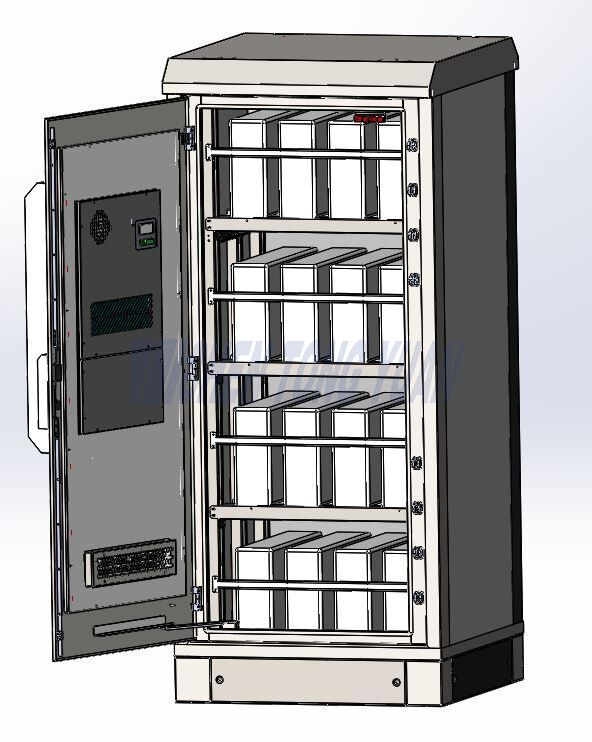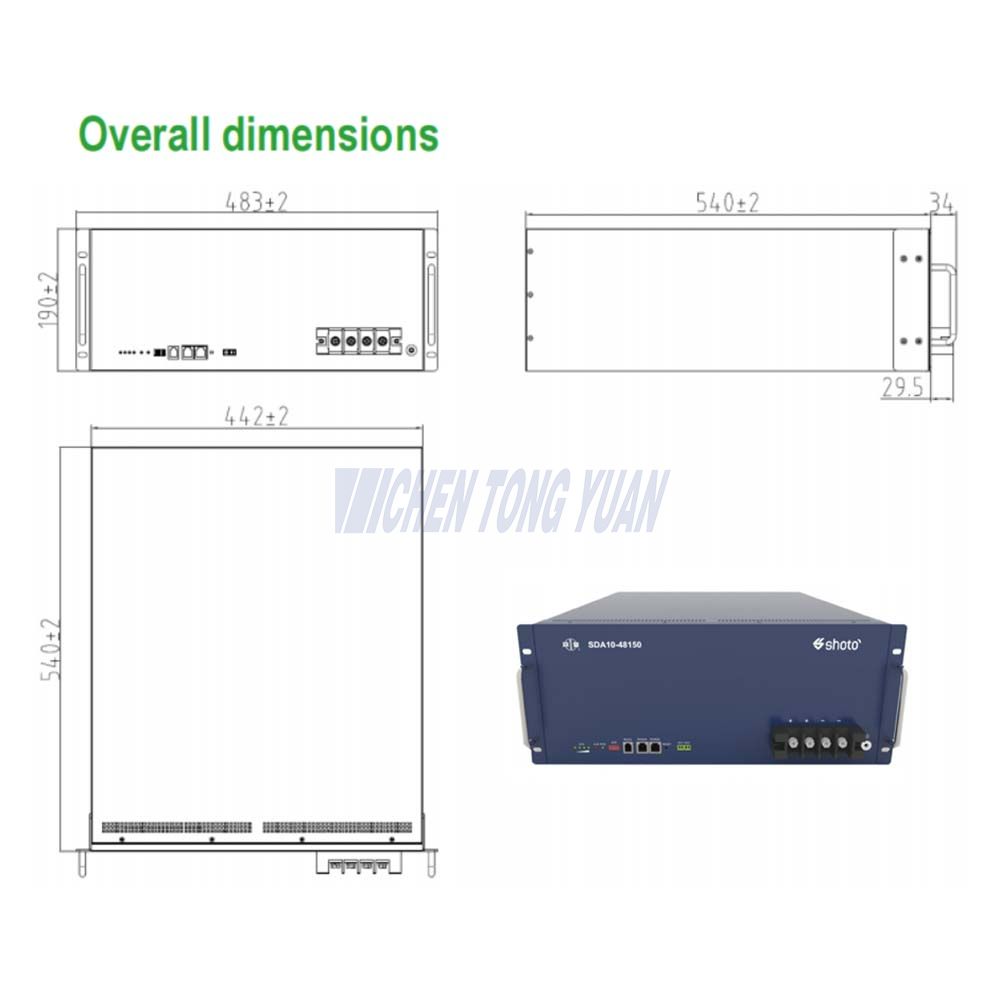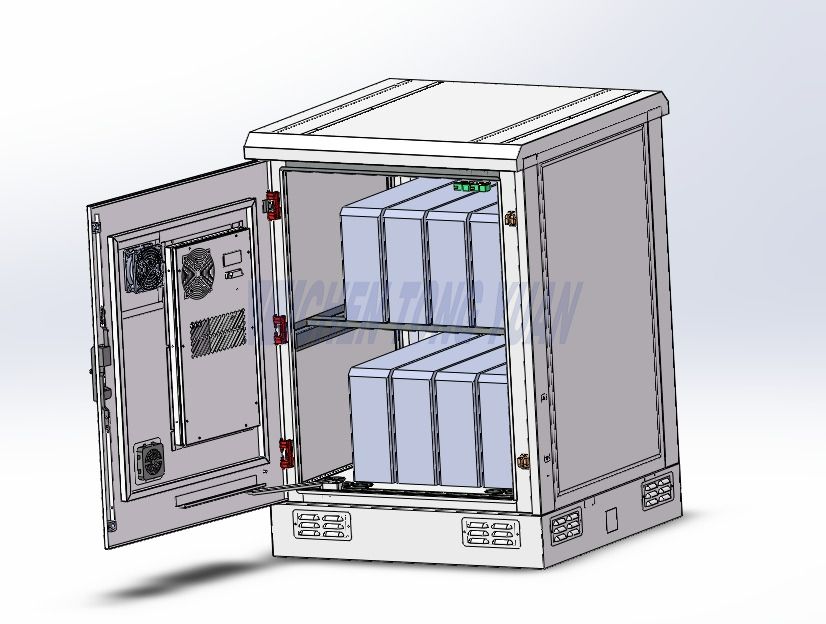When planning an outdoor power solution, choosing the right outdoor battery cabinet is critical for ensuring efficiency, safety, and longevity. Whether you're setting up a backup power system for a telecommunications site, a renewable energy project, or an off-grid application, understanding how to size an outdoor battery cabinet is essential. This guide will walk you through the key factors to consider, from battery capacity to environmental conditions, to help you determine how much space you need for your outdoor battery cabinet.

Why Proper Sizing Matters for Outdoor Battery Cabinets
An outdoor battery cabinet protects batteries from harsh environmental conditions like extreme temperatures, humidity, and dust while ensuring optimal performance. Incorrect sizing can lead to several issues:
Undersized cabinets may not accommodate all necessary components, leading to overheating or insufficient ventilation.
Oversized cabinets waste space, increase costs, and may reduce efficiency.
Improper sizing can compromise safety, battery lifespan, and system reliability.
By carefully assessing your needs, you can select a cabinet that balances space, functionality, and cost-effectiveness.
Key Factors to Consider When Sizing an Outdoor Battery Cabinet
To choose the right size for your outdoor battery cabinet, you need to evaluate several factors. Below, we break down the most important considerations to guide your decision.
1. Battery Type and Capacity
The type and capacity of the batteries you plan to house will significantly influence the size of the cabinet. Common battery types for outdoor applications include:
Lead-Acid Batteries: These are bulky and require more space due to their size and weight. They also need ventilation to release gases safely.
Lithium-Ion Batteries: These are more compact and lightweight, allowing for smaller cabinets. However, they may require advanced thermal management systems.
Nickel-Cadmium (NiCd) Batteries: These are durable but may need additional space for maintenance access.
To determine the space needed, calculate the total battery capacity in ampere-hours (Ah) or watt-hours (Wh). For example, a 48V system with a 200Ah capacity will require a larger cabinet than a 24V system with a 100Ah capacity. Check the physical dimensions of each battery module and account for spacing between batteries to prevent overheating.
Example and data sheet of Lithium Battery Dimension needed to determin the space of the cabinet.
 48v100ah shoto lithium battery datasheet.pdf
48v100ah shoto lithium battery datasheet.pdf

2. Number of Batteries
The number of batteries directly impacts the cabinet size. A larger system with multiple battery strings will require a bigger cabinet. For example:
When calculating, include space for wiring, connectors, and battery management systems (BMS). A rule of thumb is to allow at least 10-15% extra space for ease of installation and maintenance.
3. Environmental Conditions
Outdoor battery cabinets must withstand the elements, so the environment plays a significant role in sizing. Consider the following:
Temperature Extremes: In hot climates, cabinets need robust cooling systems, such as fans or air conditioning, which increase the cabinet’s size. In cold climates, insulation or heating elements may be required.
Humidity and Moisture: Waterproof or IP-rated cabinets (e.g., IP65) are essential for humid or rainy areas, which may add to the cabinet’s dimensions.
Dust and Debris: In dusty environments, cabinets may need air filters, which require additional space.
For example, a cabinet in a desert region might need a larger footprint to accommodate cooling systems, while one in a coastal area may require extra space for corrosion-resistant materials.
4. Ventilation and Cooling Requirements
Batteries generate heat during charging and discharging, so proper ventilation is critical to prevent overheating. Lead-acid batteries, in particular, release hydrogen gas, requiring adequate airflow to avoid buildup. When sizing your cabinet:
Ensure there’s enough space for vents or fans.
Include room for thermal management systems, such as heat exchangers or air conditioners, if needed.
Follow manufacturer guidelines for minimum clearance around batteries (typically 1-2 inches between units).
A well-ventilated cabinet may need to be 20-30% larger than the batteries alone to accommodate these systems.
5. Additional Equipment
Beyond batteries, outdoor battery cabinets often house additional components, such as:
Battery Management Systems (BMS): Monitors battery health and performance.
Inverters or Chargers: Converts DC to AC power or manages charging cycles.
Cabling and Connectors: Requires space for organized wiring to prevent clutter and ensure safety.
Make a list of all components and their dimensions to ensure the cabinet can accommodate everything. For example, a BMS might add 6-12 inches to the cabinet’s width or height.
6. Accessibility and Maintenance
Ease of access is crucial for maintenance and inspections. When sizing your cabinet:
Allow enough room for technicians to access batteries and components without difficulty.
Include space for hinged doors, removable panels, or slide-out racks.
Consider local regulations, which may require specific clearances for safety.
A cabinet that’s too cramped can make maintenance challenging, increasing downtime and costs.
Video for professional desigining for outdoor lithium battery cabinet including inverters mounted
7. Future Scalability
Plan for future expansion when sizing your cabinet. If you anticipate adding more batteries or upgrading your system, choose a cabinet with extra capacity. This prevents the need for costly replacements down the line. For example, a cabinet designed for 8 batteries could be sized to accommodate 12 for future growth.
How to Calculate the Right Cabinet Size
To determine the appropriate size for your outdoor battery cabinet, follow these steps:
List All Components: Include batteries, BMS, inverters, chargers, and wiring. Note their dimensions (length, width, height) and weight.
Calculate Total Volume: Add up the volume of all components, including spacing for ventilation and accessibility (add 10-20% extra space).
Account for Environmental Needs: Add space for cooling, heating, or insulation based on your location.
Check Manufacturer Specifications: Ensure the cabinet meets the battery manufacturer’s requirements for clearance and ventilation.
Consider Mounting Options: Decide whether the cabinet will be wall-mounted, pole-mounted, or freestanding, as this affects size and footprint.
For example, if you’re housing four 12V 100Ah lead-acid batteries (each 12”L x 7”W x 9”H), you’d need a cabinet with at least 48”L x 14”W x 18”H to accommodate the batteries, plus additional space for ventilation, wiring, and maintenance access.
Standard Outdoor Battery Cabinet Sizes
Outdoor battery cabinets come in various standard sizes, typically measured in rack units (U) or physical dimensions. Common sizes include:
Small Cabinets (4U-12U): Suitable for 1-4 batteries, ideal for small telecom or solar setups.
Medium Cabinets (12U-24U): Accommodate 4-8 batteries, common for commercial applications.
Large Cabinets (24U+): Designed for large-scale systems with 8+ batteries, used in off-grid or industrial settings.
Always check with the manufacturer for exact dimensions and IP ratings to ensure the cabinet meets your needs.
Choosing the Right Material for Your Cabinet
The material of the cabinet affects its size and durability. Common materials include:
Stainless Steel: Durable and corrosion-resistant, ideal for harsh environments but heavier and larger.
Aluminum: Lightweight and resistant to rust, suitable for most climates.
Fiberglass or Polycarbonate: Lightweight and non-conductive, ideal for coastal or high-humidity areas.
Choose a material that balances durability with size constraints, especially if space is limited at your installation site.
Tips for Optimizing Your Outdoor Battery Cabinet Setup
Work with a Professional: Consult with an engineer or supplier to ensure your cabinet meets all technical and safety requirements.
Use Modular Designs: Modular cabinets allow for easier upgrades and maintenance.
Prioritize Energy Efficiency: Opt for cabinets with energy-efficient cooling systems to reduce operational costs.
Check Local Regulations: Ensure your cabinet complies with local codes for outdoor electrical installations.
Cytech Modular Design Outdoor Battery Cabinet Pole Mounted Design


Conclusion
Sizing an outdoor battery cabinet requires careful consideration of battery type, capacity, environmental conditions, and additional equipment. By accounting for ventilation, accessibility, and future scalability, you can select a cabinet that meets your needs while ensuring safety and efficiency. Use the steps outlined in this guide to calculate the right size, and always consult with professionals to verify your setup.
For more information on outdoor battery cabinets or to explore specific models, contact a trusted supplier or visit our website for expert recommendations tailored to your project.
Ready to find the perfect outdoor battery cabinet? Start by assessing your battery needs and environmental conditions to ensure a reliable and efficient power solution.
















